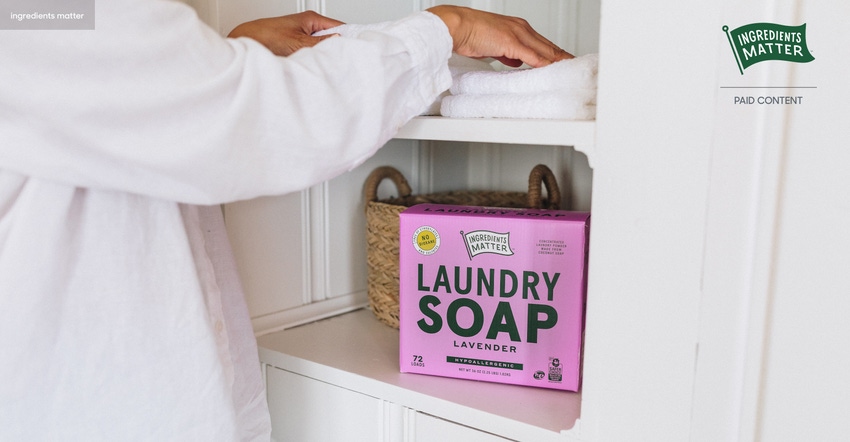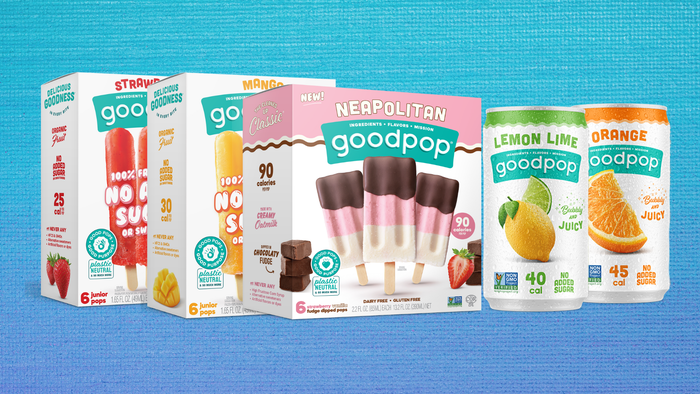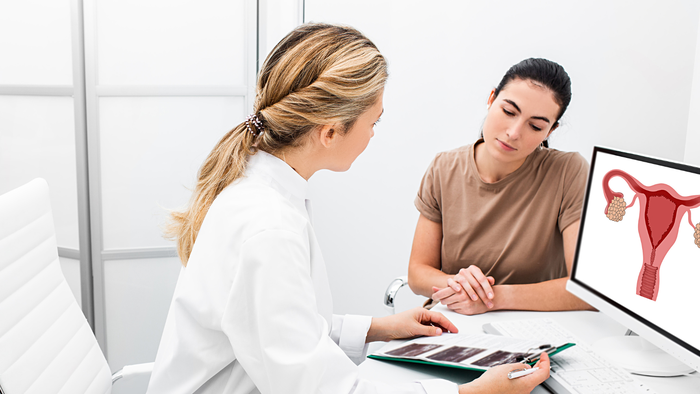Are there potential carcinogens swimming in your biobased laundry detergent? – article
Ethoxylated ingredients can leave behind a probable carcinogenic byproduct that's terrible for people and the planet.
May 27, 2022

Sponsored by Ingredients Matter
The potential carcinogen, 1,4-Dioxane, has come under fire in recent years after its detection in groundwater and drinking water supplies near chemical plants and waste sites. As a result of manufacturing with ethoxylated detergents, home cleaning products also contain varying amounts of 1,4-Dioxane, which recently led New York State to reduce allowable levels below federal minimums. New York law will require laundry detergents and household cleaners to include no more than two parts per million (PPM) by the end of 2022. That limit will reduce to a maximum of 1 PPM by the end of 2023. Meanwhile, environmental groups are targeting 1,4-Dioxane's eradication in household cleaning products altogether.
Start-up laundry care brand, Ingredients Matter, has created a Laundry Soap without 1,4-Dioxane or ethoxylated detergents. The brand engaged Bureau Veritas, an international leader in third-party lab testing, to evaluate 1,4-Dioxane levels in laundry cleaners from Tide, Arm & Hammer, All, Gain, Method, Mrs. Meyers, and Seventh Generation. The study is the first of many from the brand and intends to help consumers understand how much Dioxane they come in contact with unknowingly.
What is 1,4-Dioxane?
The chemical is most prevalent in wastewater near chemical plants and in soil at biohazard sites, so how does it end up in laundry detergent? Most detergents are made through a process called ethoxylation, where Ethylene Oxide (EtO) reacts with a fatty alcohol. That process creates inexpensive, hard-working detergents like Sodium Laureth Sulfate and Poly Ethylene Glycol (PEG). Often, ethoxylation leaves behind a residual chemical, called 1,4-Dioxane, which ends up in cleaners like laundry detergent, toothpaste, or shampoo. 1,4-Dioxane, just like its origin source EtO, is a likely carcinogen. Only chemical labs with special equipment can prove its presence in household products because it's not an intentional ingredient, and the naked eye can't see it.
The most common ethoxylated laundry detergent ingredients to avoid:
Sodium Laureth Sulfate
Laureth-6 & Laureth-7
C12-16 Pareth
Polyethelene Glycol (PEG)
About Ingredients Matter
Ingredients Matter is a Minneapolis-based start-up brand focused on making genuinely better household products. Starting with the unregulated world of laundry detergents, they’ve created a Laundry Soap made from coconut soap flakes and salts, rather than harsh detergents, so it’s naturally free from ethoxylates and 1,4-Dioxane. In third-party testing, Ingredients Matter Laundry Soap was shown to clean better than natural and biobased detergents currently on the market. Beyond making better household and laundry cleaning products, the brand hopes to spur a shift in the category by working with third-party labs to continually test ethoxylated detergents for 1-4,Dioxane content.
You May Also Like


